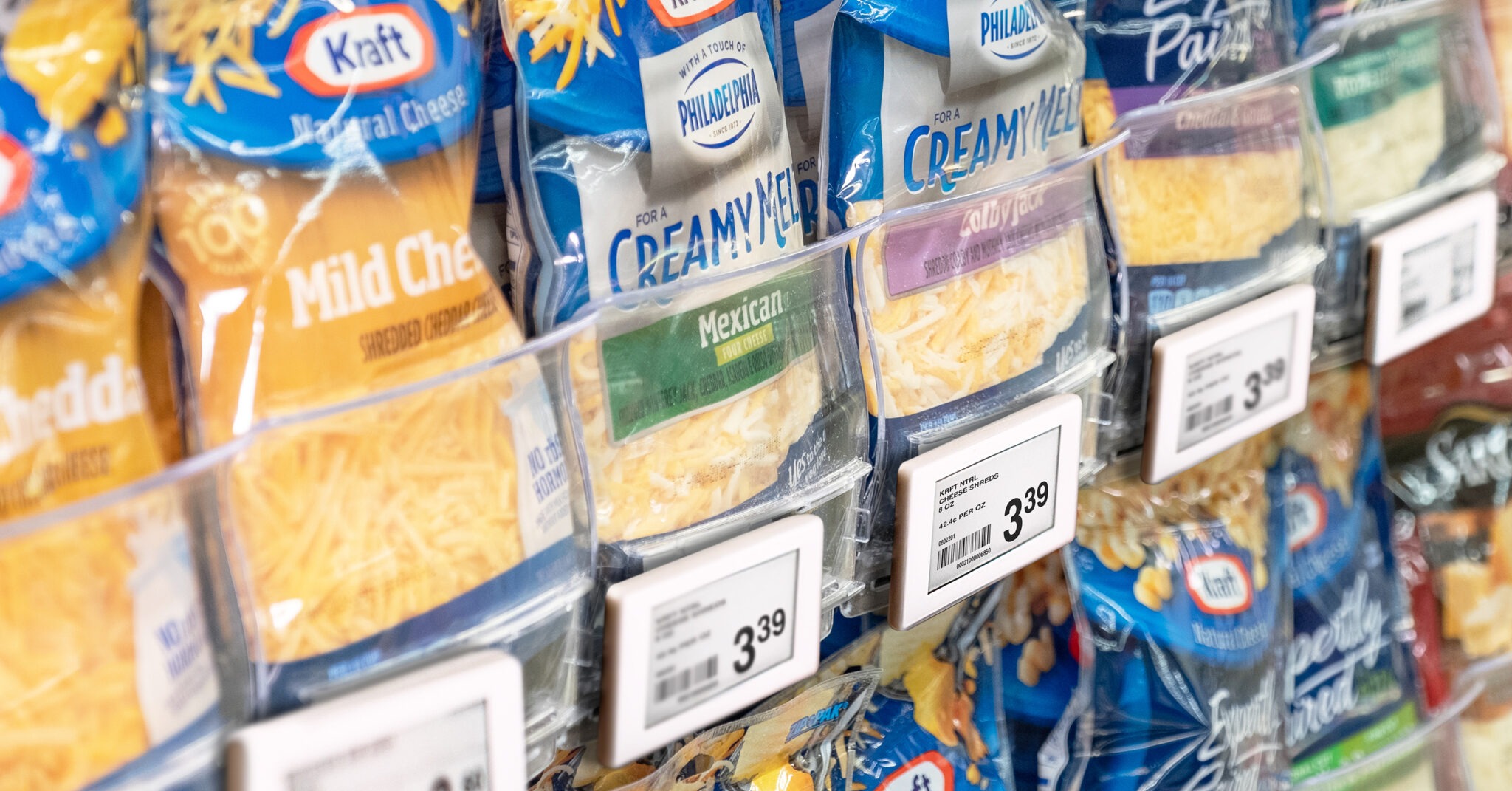Grocery retail is entering its next phase of modernization. Electronic Shelf Labels (ESLs) are quickly becoming a must-have for grocers aiming to stay competitive, boost pricing accuracy and streamline operations. Early adopters are already seeing measurable benefits, from time savings on the floor to lower waste and stronger shopper engagement.
The shift is happening rapidly. The global ESL market was valued at $1.85 billion in 2024 and is projected to reach $7.54 billion by 2033. That growth reflects a shift away from manual, paper-based pricing updates toward real-time digital systems that give retailers more control and flexibility.
Walmart is one of the highest-profile adopters. The company has announced plans to deploy ESLs in 2,300 U.S. locations by next year. Associates will update pricing through a mobile app; a move expected to free up labor for higher-value tasks and ensure pricing accuracy across thousands of SKUs.
ESL is helping the world’s largest retailers optimize pricing strategies—but it can help smaller chains and local supermarkets all the same. Here are four benefits stores can expect when moving from paper price tags to ESL.
1. Time & labor savings
Manual price changes are time-consuming. Staff must print, cut and place new paper tags for every promotion or adjustment, often across multiple departments. ESL systems automate these steps, enabling price updates across entire categories in seconds. This not only saves significant labor hours but also allows associates to focus more on service and merchandising.
2. Increased pricing accuracy
Pricing errors erode shopper trust and can lead to compliance issues and even lawsuits. Digital tags ensure that shelf prices and POS prices match in real time, minimizing customer disputes and reducing the risk of fines. Large retailers are leaning on ESL systems to maintain accuracy during rapid price fluctuations—a key advantage in competitive grocery environments where prices change daily.
3. Less waste, more sustainable
Paper price labels create a surprising amount of operational waste. ESLs eliminate the constant churn of printing and disposal. Research from the University of California found that dynamic pricing of perishables can cut food waste by up to 21 percent. By enabling real-time markdowns on soon-to-expire goods, ESLs give retailers a practical way to reduce shrink while supporting their sustainability goals.
4. An Improved in-store experience
Shoppers notice when stores feel modern and organized. ESLs support a cleaner visual aesthetic, reduce clutter from paper tags and enable contextual messaging that can guide shoppers to promotions or product details. Improve the in-store shopping experience even further with innovative pusher trays from Retail Space Solutions and the new ESL Universal Attachment Channel. This new product makes it simple for grocers to integrate digital pricing cleanly across multiple shelving types, keeping displays consistent and easy to shop. This system is compatible with new and existing SpaceGrid® II and SpaceGrid® II On Bar Systems and a broad range of ESL styles. Installation is fast and tool-free, and once installed, the ESL Universal Attachment Channel prevents shifting, tilting and falling and is easy to relocate from tray to tray without damage.
“Electronic Shelf Labels make it easier for grocery stores to quickly adapt to price changes, avoid errors and reduce waste. And our new Universal Attachment Channel delivers this technology to the refrigerated and frozen sections with ease. This technology was developed at the request of our customers, and we look forward to seeing how it can improve in-store efficiency for new and existing RSS customers,” said Katja Wood, Marketing Director at Retail Space Solutions.
For grocers, ESLs represent a rare technology investment that delivers on multiple fronts: operational efficiency, sustainability, shopper experience and pricing precision. With large-scale deployments underway and costs falling as the market matures, the case for adoption is stronger than ever. And with the new universal attachment channel, a full or partial store rollout has never been easier.
